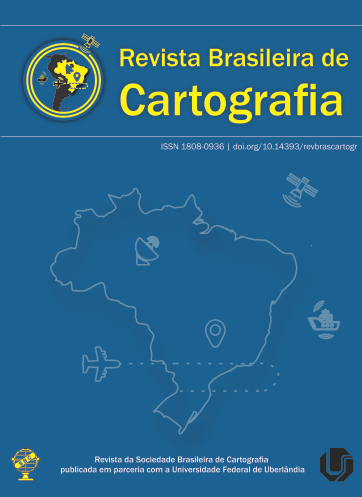Influence of slope shape on susceptibility to erosion in the Rio Claro watershed (Santa Rita do Passa Quatro, SP)
Main Article Content
Abstract
Erosion, known as a phenomenon that causes serious consequences to the physical environment, has become a global concern and the focus of many studies in order to prevent or control its effects. The catchment area of Rio Claro, located in the northeastern part of the state of São Paulo, consists predominantly of unconsolidated sandy texture materials and comprises an area of 251.91km². The aim of this work was to investigate the influence of slope shapes on the analysis of susceptibility to the accelerated erosion of this basin at a 1:50,000 scale, by comparing two methods: Analytical Hierarchical Process (AHP) Technique and Weighted Sum (WS). Intermediate and thematic cartograms were generated from a pre-existing database. The regions with slopes between 2 and 10% comprise 1.55km² and are characterized as medium concave and convex hills, with the presence of unconsolidated materials corresponding mainly to the Quaternary and Tertiary Formations, where there is a predominance of large active erosions. The results show disseminated erosion processes in areas classified as low susceptibility and very low according to the two techniques. The concentration of the erosion processes is controlled by the shape of the slopes, particularly in the areas of medium hills with concave profiles, with sandy soil profiles and low compactness. In addition to the influence of sandy texture and low compactness of soils, concentration of erosive processes is mainly controlled slope shape. Major number of erosive processes occurs in concave divergent hills areas, while the highest densities of erosive processes are located in areas of convex divergent hills and, secondarily, in rectilinear divergent hills.
Downloads
Metrics
Article Details
Authors who publish in this journal agree to the following terms:
- Authors retain copyright and grant the journal right of first publication with the work simultaneously licensed under a Creative Commons Attribution License that allows others to share the work with an acknowledgment of the work's authorship and initial publication in this journal.
- Authors can enter into separate, additional contractual arrangements for the non-exclusive distribution of the journal's published version of the work (e.g., post it to an institutional repository or publish it in a book), with an acknowledgment of its initial publication in this journal.
- Authors are permitted and encouraged to post their work online (e.g., in institutional repositories or on their website) before and during the submission process, as it can lead to productive exchanges, as well as earlier and greater citation of published work (see "The Effect of Open Access").





